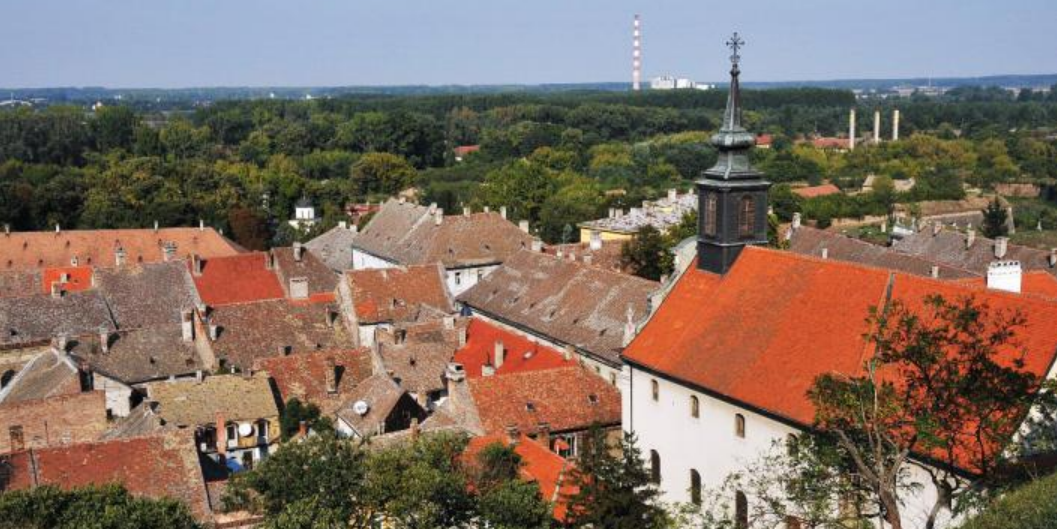The interest in solar district heating has increased significantly in Serbia since the European Bank for Reconstruction and Development (EBRD) started to finance prefeasibility studies for SDH plants in January 2019. Furthermore, Serbia adopted a Renewable Energy Law in April 2021 which includes an ambitious mechanism to support the implementation of renewable heating and cooling capacity.
The Northern Serbian city of Novi Sad (see photo) is one of the cities with a rather modern district heating system and a committed municipal council which is pushing the planning for a multi-MW solar heat plant. In this interview, Bojan Bogdanovic, Principal Fund Manager of the Renewable District Energy in the Western Balkans (ReDEWeB) programme, tells lessons that have been learned from three years of promoting solar district heating in the Western Balkan countries.
What is the current status of the planning process for SDH in Novi Sad?
Bogdanovic: In September 2021, the municipality accepted the prefeasibility study’s recommendations and decided to proceed and conduct a feasibility study together with the EBRD. The solar heat solution currently being discussed should be of more than 65,000 m2 and have seasonal storage. This decision has been announced already via social media and we are waiting to receive the formal request for cooperation from the municipality. The city on the Danube has a rather modern district heating grid, which is very suitable for the feed-in of solar heat.
What are the convincing arguments for solar heat as an option to make the example central heat supply system in Novi Sad greener?
Bogdanovic: One of the major advantages are the zero local emissions of solar heat plants, considering that most cities in the Western Balkans have an air quality problem and therefore biomass plants are not always seen as an ideal solution for greening the district heating grid. Another important advantage is the stable and predictable heat prices throughout the lifetime of the facility, enabling the municipal utility to manage the system in an economically efficient way in the short, medium and long-term.
How good are the conditions for solar district heating in the Western Balkan countries?
Bogdanovic: The Western Balkans is one of the southernmost European regions with significant solar radiation and large district energy systems. Some of them have a high degree of modernization and digitalization, achieving operating parameters that are very suitable for solar. The average fluid temperatures in the return line are often below 50 °C because of efficient temperature regulation in the buildings, good hydraulic balancing and an increasing percentage of renovated buildings.
Project development times for solar district heating are generally long. What does your experience in the Western Balkans indicate?
Bogdanovic: Five years usually pass between the initial discussions and the start of the ground work. That´s why it is great news that the donors from the Austrian and Swiss governments have extended the ReDEWeB programme for two more years until December 2024.
What role does the distance between the collector field and the feed-in point play when searching for land?
Bogdanovic: The distance between the land dedicated for the solar collector field and the feed-in point in the existing heat network, which needs to have a large enough dimension, or the heating centre is important for the feasibility of the project. The larger the scale of the project and the amount of heat generated, the longer a justifiable connection pipeline can be. Heat losses are not the key issue here but the CAPEX that needs to be invested in constructing the connection pipeline.
What do you expect from the new Renewable Energy Law in Serbia?
Bogdanovic: The law is a great step forward for SDH in Serbia. It stipulates that the government must establish a support mechanism to cover a certain share of the investment costs of renewable heating and cooling projects. What is important is that the law guaranties that the district energy utilities must purchase surplus heat from both private and public operators of renewable heat plants. The Ministry of Mining and Energy is currently drafting all the sub-laws necessary for the full implementation of the bill and it is expected that this process will be complete in early 2022.
Organisations mentioned in the interview:
https://www.ebrd.com/home
http://www.pancevo.rs/en/
http://www.grejanje-pancevo.co.rs/
http://www.novisad.rs/
Source and full article: www.solarthermalworld.org
